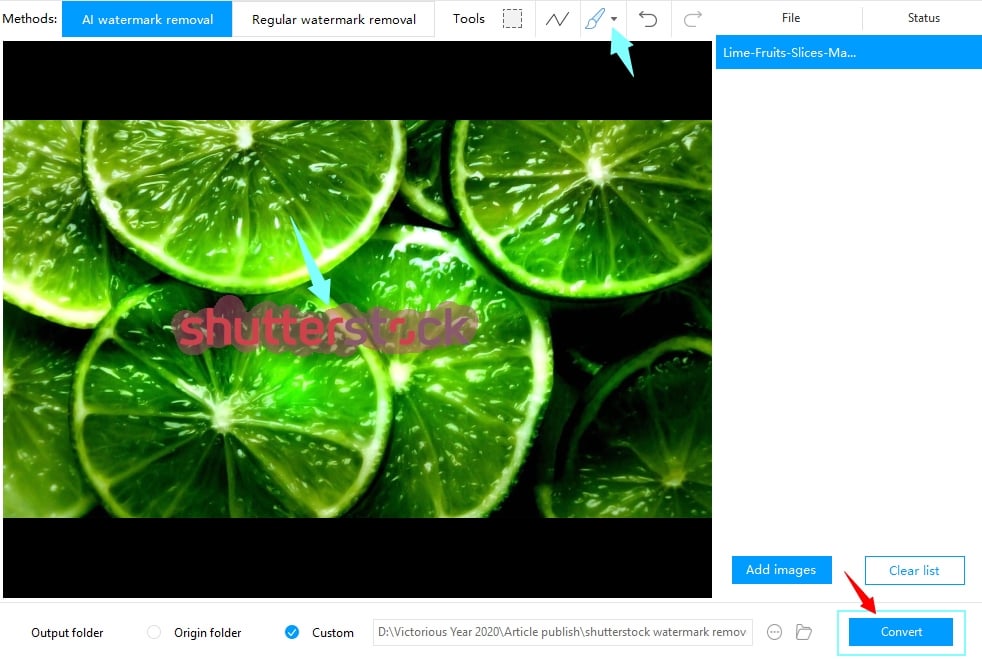Have you ever come across a stunning image on Shutterstock and wondered how to use it without the watermark? While watermarks are there to protect the creator’s rights, sometimes you might need to access the image for legitimate reasons—like for educational purposes or personal projects. In this post, we’ll explore effective methods to remove Shutterstock watermarks without relying on software, but keep in mind, understanding the legal and ethical boundaries is just as important as knowing the techniques. Let’s dive into what you should consider before attempting any removal processes.
Understanding the Legal and Ethical Aspects of Watermark Removal

Before we discuss how to remove watermarks, it’s crucial to understand the legal and ethical implications involved. Watermarks are placed on images to protect the rights of photographers, designers, and copyright holders. Removing a watermark without permission can be considered copyright infringement, which might lead to legal consequences. Ethically, respecting creators’ work means obtaining proper licensing or permission before using their images. If you genuinely need an unwatermarked version, the best approach is to purchase the appropriate license or contact the owner for permission. Doing so supports artists and ensures you’re using images responsibly. Remember, shortcuts might seem tempting, but respecting intellectual property rights is always the right choice in the long run.
3. Manual Techniques for Removing Watermarks Without Software

When it comes to removing watermarks from Shutterstock images without diving into complicated software, manual techniques can sometimes do the trick—if you’re patient and careful. Keep in mind, though, that these methods work best on simpler backgrounds or images where the watermark isn’t too intrusive. Let’s explore some practical, hands-on ways to tackle this.
One straightforward approach is to use basic image editing techniques available on your computer or device. For example, if you have a photo editing program like Paint.NET or even built-in tools on Windows or macOS, you can try the following:
- Crop the Image: If the watermark is located near the edges, the simplest method might be cropping it out. This works well when the essential part of the image isn’t lost by cropping.
- Clone or Stamp Tool: Some basic editors include a clone or stamp tool that allows you to sample nearby pixels and paint over the watermark. This requires a steady hand and some patience to match textures and colors properly.
- Healing Brush: Similar to clone tools, healing brushes blend the area you paint over with surrounding pixels, making the watermark less noticeable.
Another manual technique involves the use of simple selection tools:
- Use the selection tool to carefully outline the watermark.
- Then, fill or replace the selected area with neighboring pixels or a background pattern that matches the surrounding area.
For more complex backgrounds, you might need to get creative—perhaps use a combination of cloning, healing, and cropping. It’s like digital patchwork! Remember, the key is to work slowly and zoom in for precision. Also, be aware that these methods can sometimes leave traces or artifacts, especially if the background is detailed or textured.
Lastly, keep in mind that manual removal might not always produce perfect results, especially with intricate watermarks or busy backgrounds. Still, with patience and a steady hand, you can often improve the image enough for personal use or quick presentations. If you find manual techniques too tedious or imperfect, moving on to online tools might be your best bet.
4. Using Online Tools and Online Editors to Remove Watermarks
If manual editing sounds a bit daunting or time-consuming, don’t worry—there are plenty of online tools designed specifically to help you remove watermarks quickly and easily. These web-based editors are user-friendly, require no installation, and often deliver surprisingly good results. Let’s dive into how you can leverage these platforms effectively.
Popular Online Watermark Removal Tools: Here are some options to consider:
Most of these tools work similarly:
- Upload Your Image: Simply select the image with the watermark from your device or cloud storage.
- Use the Removal Tool: Many platforms offer a brush or marker tool that lets you highlight the watermark area. Some use AI-powered algorithms that automatically detect and remove the watermark when you click or brush over it.
- Refine the Result: After the initial removal, you can often adjust or blend the area to make it look seamless. Features like healing brushes or background blending help improve the final image.
- Download the Edited Image: Once satisfied, save the image back to your device. Many tools let you choose different formats and quality settings.
Tips for Best Results:
- Choose images with simple backgrounds for easier removal.
- Zoom in to work with precision during editing.
- Experiment with different tools and settings to see what works best for your specific image.
- Be cautious—some online tools have limitations on image size or may add watermarks themselves unless you opt for premium versions.
While online tools are super convenient, keep in mind that results can vary based on the complexity of the watermark and the background. For simple watermarks over uniform backgrounds, these tools usually do a decent job. For more complex images, you might need to try a combination of manual and online techniques or consider professional editing services if the image is critical.
In the end, whether you choose manual methods or online editors, always respect copyright laws and usage rights associated with Shutterstock images. Use these techniques responsibly, especially if your intent is commercial or public sharing. Happy editing!
5. Tips for Avoiding Watermarks When Downloading Shutterstock Images
Let’s be real — the best way to get high-quality images from Shutterstock is to go through the proper channels. Watermarks are there to protect the creators’ rights, so trying to bypass them isn’t just unethical — it can also land you in hot water legally. But if you want to stay on the right side of the law and still get the images you need, here are some practical tips:
- Subscribe or Purchase the Correct License — The most straightforward way to avoid watermarks is to subscribe to Shutterstock or buy the image license directly. This grants you legal access to high-resolution, watermark-free images.
- Use the Preview Feature — Shutterstock allows you to preview images with watermarks before purchasing. Use this to ensure the image fits your needs before making a purchase.
- Utilize the Download Options Properly — When you buy or subscribe, always download the high-resolution, watermark-free version directly from the platform. Avoid third-party sites or unofficial sources claiming to offer free downloads.
- Plan Your Downloads — If you frequently need images, consider creating a collection or playlist within your Shutterstock account. This way, you can organize and download multiple images when needed, reducing the temptation to seek unofficial methods.
- Stay Updated on Shutterstock Policies — Licensing rules can change, so it’s helpful to stay informed about Shutterstock’s terms of use. This ensures you’re always aligned with their policies and avoid accidental infringements.
Remember, respecting copyright not only keeps you out of legal trouble but also supports the talented photographers and artists who create these images. When in doubt, it’s always best to pay for the license — it’s a small price to pay for peace of mind and high-quality content.
6. Conclusion and Best Practices for Using Shutterstock Images Legally
Using images from Shutterstock can be a fantastic way to enhance your projects, whether it’s for your website, presentation, or marketing materials. However, it’s crucial to approach this resource responsibly to respect creators’ rights and stay compliant with licensing agreements.
Here are some key takeaways and best practices:
- Always Purchase or License Properly — Never attempt to remove watermarks illegally or use images without proper licensing. Doing so can lead to serious legal consequences.
- Understand Your License Type — Shutterstock offers various licenses (standard, enhanced, etc.). Make sure you choose the right one for your project to avoid unexpected restrictions or costs.
- Keep Records of Your Licenses — Save copies of your license agreements and receipts. This documentation can be helpful if you ever need to prove your right to use an image.
- Attribute When Required — Some licenses or uses may require attribution. Always check the licensing terms and give credit where needed.
- Avoid Unauthorized Methods — Steer clear of any tactics that involve hacking, watermark removal tools, or unofficial downloads. These are illegal and unethical.
In the end, the goal is to create stunning content while respecting the hard work of photographers and artists. By following these best practices, you can confidently incorporate Shutterstock images into your projects without worry. Remember, proper licensing not only keeps you out of trouble but also supports the creative community that makes these beautiful images possible. Happy designing!


